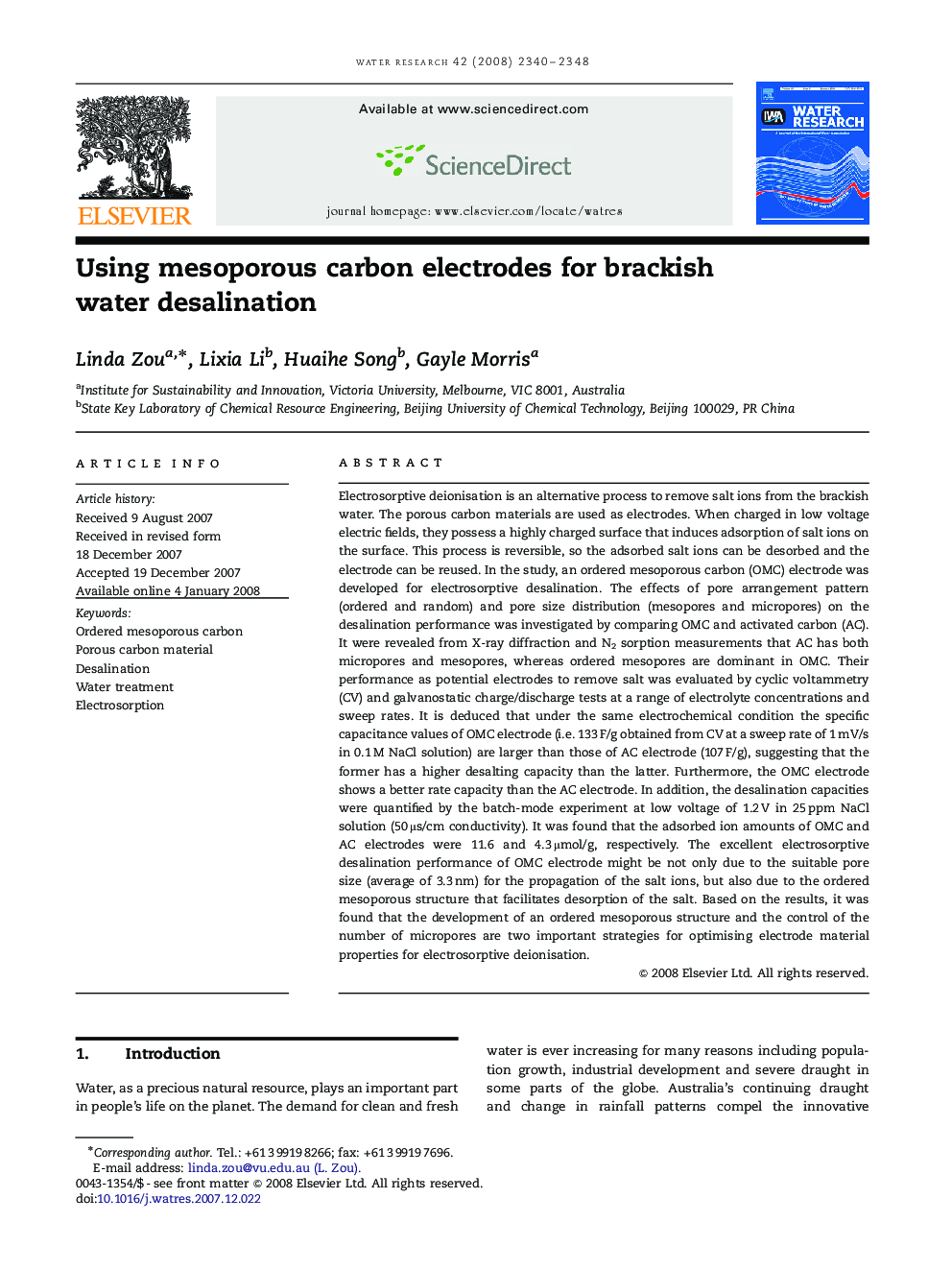| کد مقاله | کد نشریه | سال انتشار | مقاله انگلیسی | نسخه تمام متن |
|---|---|---|---|---|
| 4484962 | 1623122 | 2008 | 9 صفحه PDF | دانلود رایگان |

Electrosorptive deionisation is an alternative process to remove salt ions from the brackish water. The porous carbon materials are used as electrodes. When charged in low voltage electric fields, they possess a highly charged surface that induces adsorption of salt ions on the surface. This process is reversible, so the adsorbed salt ions can be desorbed and the electrode can be reused. In the study, an ordered mesoporous carbon (OMC) electrode was developed for electrosorptive desalination. The effects of pore arrangement pattern (ordered and random) and pore size distribution (mesopores and micropores) on the desalination performance was investigated by comparing OMC and activated carbon (AC). It were revealed from X-ray diffraction and N2 sorption measurements that AC has both micropores and mesopores, whereas ordered mesopores are dominant in OMC. Their performance as potential electrodes to remove salt was evaluated by cyclic voltammetry (CV) and galvanostatic charge/discharge tests at a range of electrolyte concentrations and sweep rates. It is deduced that under the same electrochemical condition the specific capacitance values of OMC electrode (i.e. 133 F/g obtained from CV at a sweep rate of 1 mV/s in 0.1 M NaCl solution) are larger than those of AC electrode (107 F/g), suggesting that the former has a higher desalting capacity than the latter. Furthermore, the OMC electrode shows a better rate capacity than the AC electrode. In addition, the desalination capacities were quantified by the batch-mode experiment at low voltage of 1.2 V in 25 ppm NaCl solution (50 μs/cm conductivity). It was found that the adsorbed ion amounts of OMC and AC electrodes were 11.6 and 4.3 μmol/g, respectively. The excellent electrosorptive desalination performance of OMC electrode might be not only due to the suitable pore size (average of 3.3 nm) for the propagation of the salt ions, but also due to the ordered mesoporous structure that facilitates desorption of the salt. Based on the results, it was found that the development of an ordered mesoporous structure and the control of the number of micropores are two important strategies for optimising electrode material properties for electrosorptive deionisation.
Journal: Water Research - Volume 42, Issues 8–9, April 2008, Pages 2340–2348